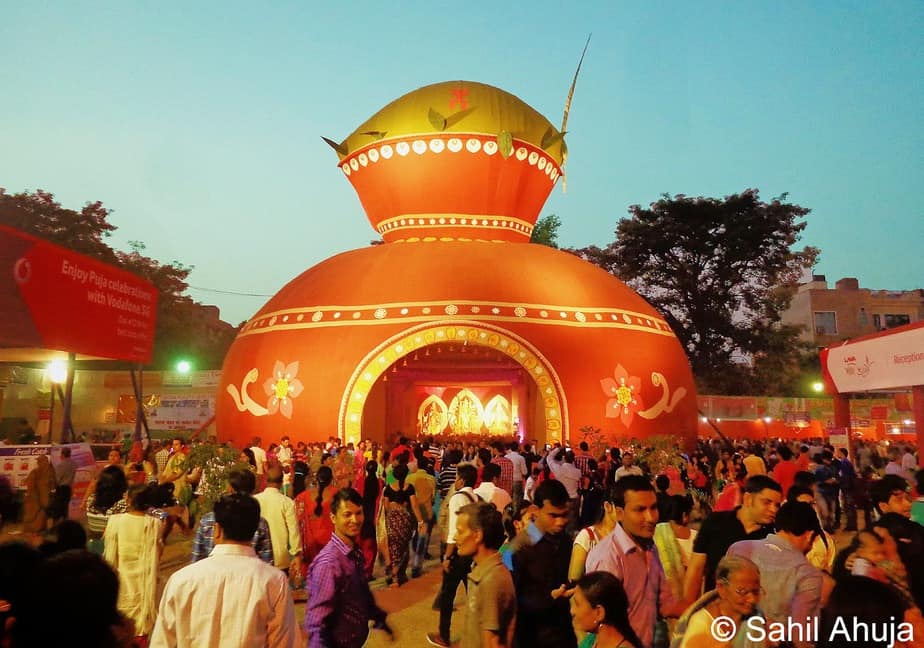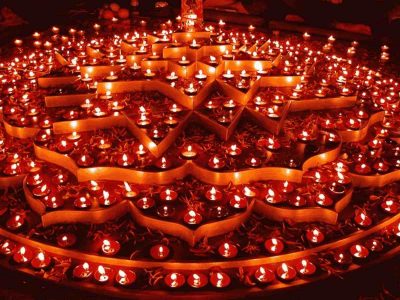There’s an ugly side to celebrations, fanfare and festivity when environment bears the brunt. There has to be a sustainable way of celebrating Durga Puja
Living in the little Calcutta inside Delhi — I mean Chitto Park or Chittaranjan Park — is fairly pleasant most of the year. To be woken up by soothing sitar play or rendition of Bengal Bhairav Bhairavi in the neighbourhood can be inspirational and sets the day rolling on a positive note. Cuisine, culture, mythology, religion, temple bells, music float in the the air and makes their presence felt every now and then.
However, things change during the four days of Durga Puja. Dozens of pandals — the making of which is undoubtedly an art form — are erected in public parks, housing magnificent statues of Ma Durga, Laxmi, Saraswati, Kartikeya and Ganesh.
Thousands throng the streets, which become congested with people trying to have a darshan of their idols and admire the artistic flourishes. Scores of people can be seen clicking pictures. Some significant, highly excitable people, numbering hundreds, while criss-crossing between pandals, incessantly blow trumpets, creating a tumult that can easily turn a person in his/her grave.
In this deluge of cacophony, thousands of people eating out, making merry, dressed traditionally, short women with big eyes in starched and gaudy sarees with golden embroidery are seen walking along briskly. The streets are awash with colour and festivity. Housewives dressed in new attire get a much-needed respite from the confines of their kitchen.
It’s also a time when the talented yet amateur dancers and singers, mostly women, though also men, showcase their talent. In most cases, they don’t refrain from using a hoarse loudspeaker. Mother Durga descends into their lives, suffuses their being with devotion; festivity can be contagious, and they seem rather committed to communally share their joys in public.
When a whole community decides to celebrate, festivity amplifies manifold. Every-where there’s too much of it, bringing the day-to-day life of the denizen residing in Chitto Park to a grinding halt. It’s like a wedding in the family. While it may be a welcome change for some, but for some significant others, locked up inside their houses, trying to get some rest, or work done or read a book, loud festivity refusing to abate till late in the night, even early morning.
This can be a fairly harrowing experience. In addition, getting in and out of the house becomes a problem. Some sensible people stop using cars and walk to the nearest Metro station to reach work – it’s far quicker that way than to use any personal form of transport.
The celebrations culminate in immersion of idols in the nearest river — in the case of Delhi, it’s the river Yamuna. But first there is a loud procession of overzealous bhaktas beating drums who transport the idols to the riverside with much fanfare, in the process causing serious traffic snarls.
Here’s an estimate of what idol immersion does to the river Yamuna. Last year, Delhi Development Authority (DDA) informed the National Green Tribunal (NGT) that it had to remove some 80 tonnes of debris dumped on the Yamuna floodplains after the idol immersion.
DDA acknowledges that it’s responsible for the development of the floodplains and therefore it is obliged to check any illegal dumping of any debris. But it blames another arm of the government for the dismal aftermath of the immersion. “The irrigation and flood control department has already cleared the immersed idols and has dumped the same on the floodplain, in place of disposing safely in a MCD construction waste site within 48 hours from immersion, which is in violation of this tribunal’s direction,” DDA says.
The Central Pollution Control Board (CPCB), on its part, issues guidelines on idol immersion that seems to have no real problem with the practice as “Idol worship has been practised in India since ancient times.” But it urges people to use natural products ‘like milk, curd, ghee, coconut, betelnut and water from the Ganga river’ as has been the case for ages.
CPCB guidelines on idol immersion further elucidate, “Idols were made of clay and then coloured with natural colours like turmeric. Religious scripts, mythology and rituals have attempted to drive the importance of preserving Nature by adoring it through the centuries.”
But that doesn’t seem to be the case in practice, as much of the debris is found to be laced with toxicity. Idols made by plaster of Paris can be seen floating in the river or languishing by the riverside, in various stages of decomposition. It is obvious that cloth and other materials used are not particularly biodegradable.
It has to be said that God, in all manifestations and avatars, wants believers to live in peace, let others live in peace and preserve Mother Nature. There has to be a concerted effort by the community to find sustainable ways of celebrating Durga Puja.





